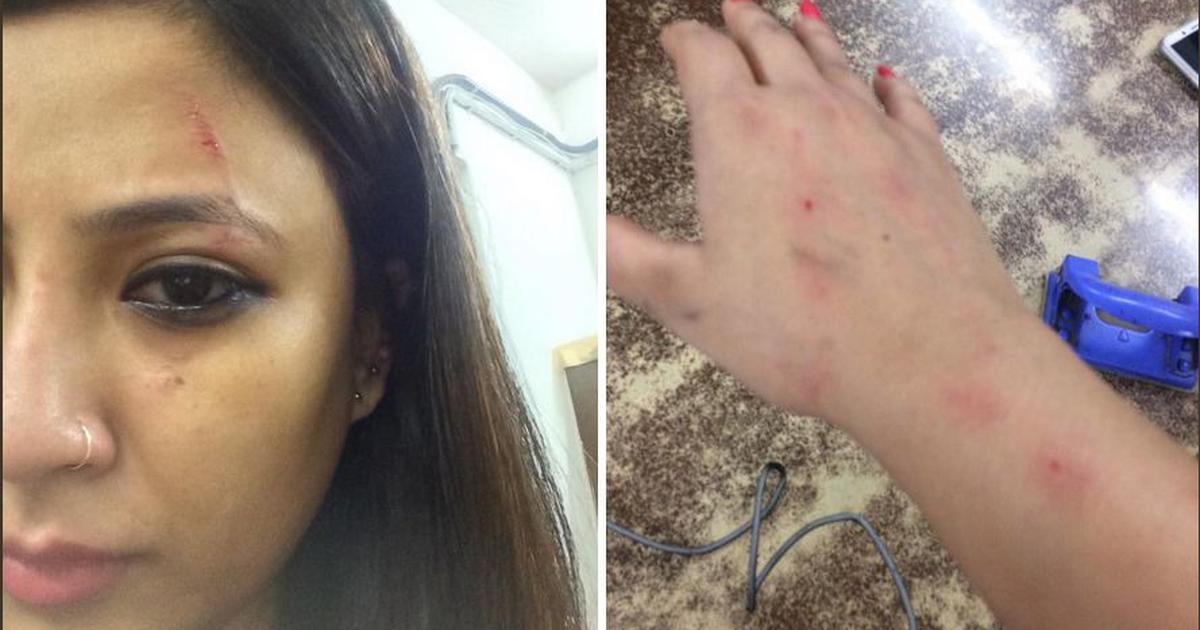6 years after racist rumours forced thousands of Northeast Indians to leave various metro cities and 4 years after the racial attack and murder of 20-year-old student Nido Tania, not much has changed in India with regards to the colossal issue of racism which has been brewing for quite some time as another ghastly, yet all too familiar case of racism was reported again a few days ago in Mumbai.
According to the victim – Ushnota Paul, she was taunted and called a “ch*nky” and a “ch*nky s**t” by her UberPool co-passenger who then proceeded to physically attack her, tearing off clumps of her hair, and also scratched her face and hands. The assaulter was allegedly disgruntled by the fact that she “paid the most and is still getting dropped last” and verbally harassed the driver and got even more angry when Paul intervened and defended the driver. Uber initially responded by saying they could not disclose the identity of the accused to the police but later backtracked by banning the rider. The case is still being investigated by Mumbai Police at the time of this writing.
Hi @Uber_Support , I had the worst experience today morning. Was Uber pooling with a woman who was hostile from the very start. She started yelling at the driver saying she’s paying the “most” & still she’s getting dropped last. When I tried to intervene I was verbally abused. pic.twitter.com/4uHLUii3X7
— June Paul (@journojuno) June 25, 2018
When we talk about racism in India, we usually only talk about instances of racism faced by the brown Indian diaspora living in predominantly white countries in the West. We conveniently ignore the fact that mainland India has a looming issue of racism against people who have Mongoloid features that it fails to address.
There has been some official steps being taken – back in 2012, the Ministry of Home Affairs asked all the states and union territories to book anyone who used the word “ch*nky” under the Scheduled Castes and Scheduled Tribes (Prevention of Atrocities) Act and whenever cases of racism receive publicity there will be some committee set up to address the issue. These are commendable steps, but are they actually being implemented? And do people care? The answer to both would be ‘sometimes’. Both the general public and the Government for the most part, only care about prejudice against India’s racial minorities only when it is sensational enough.
Brown upper class/caste people in India love talking about white privilege and making white people jokes but fail to check their own positions as oppressors.
People who have mongoloid features have to deal with racism in mainland India daily from finding housing to travelling, to a point where we have started seeing casual racism like being asked whether we still live in huts or eat snakes as “normal”. There’s the usual “Northeast and Nepali women are easy” stereotype and the fetishisation of yellow women, depriving us of of our individual uniqueness. People often ask us “Why do you always stay in groups?” which is ironic because they fail to see they only have brown friends.
Sometimes, Indian feminism can also be alienating as the assertion of “brown girl power” excludes a lot of us who are not brown. Brown upper class/caste people in India love talking about white privilege and making white people jokes but fail to check their own positions as oppressors.
Also Read: On Racism And How My Ladakhi Features Never Quite Fit The Indian Imagination
My friend Alice Hmar, a former student at Lady Shri Ram College shared her experience with me saying that someone once told her “I thought you were all the hoo-hah hoo-hah types” insinuating that all tribals are ‘jungle people’. Latei Sailo, another friend studying law in Bangalore said that these discriminations are also practiced openly in reputed institutions by supposedly well informed professors as she shares how some professors intentionally decrease internal marks for students who have Mongoloid features.
We have been conditioned to accept all these microaggressions and to not act or speak up against it because the chances of it leading to aggression and assault is highly likely. The brown mainland upper class Savarna loves exoticising other races, appropriating other cultures and complaining about racism in other countries. For example, they will ally themselves to the Black Lives Matter movement and appropriate black culture while ignoring the racism faced by Africans in India.
Indian feminism can also be alienating as the assertion of “brown girl power” excludes a lot of us who are not brown.
Racism isn’t something that can be blamed on generation gap or something that exists due to lack of familiarity. It is a problem that arises because people believe they are superior solely on the basis of their race overtly or covertly. Most of the people who are racist have all the resources to educate themselves but choose to remain willfully ignorant because they like living in the comfort of their privilege and because it is easier to blame someone’s race rather than confront one’s own shortcomings. When news like these come out, everyone is enraged but they fail to check how they contribute to the culture of racism that is thriving and often brushed off everyday.
Also Read: Living In Delhi As A Northeastern Woman: Do My Small Eyes Make Me Less Indian?
Featured Image Credit: Usnota Paul | Twitter
About the author(s)
Ruth is angsty and tired. She is also the co-founder of Nazariya LGBT and a former Digital Editor at FII




